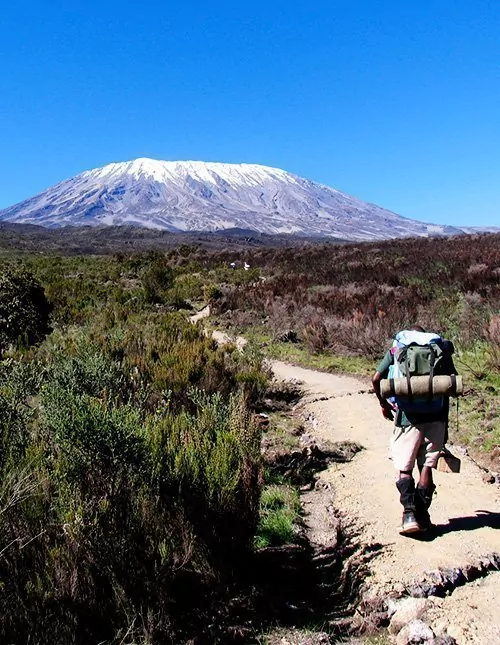5 Day Marangu Route – Kilimanjaro Climb Package
The 5 day Marangu Route is one of the most popular ways to climb Mount Kilimanjaro, perfect for trekkers seeking a shorter, well-supported, and more comfortable trek. Often called the “Coca-Cola Route,” this is the only Kilimanjaro route where climbers sleep in mountain huts rather than tents. It’s ideal for those new to high-altitude hiking or anyone looking for a classic Kilimanjaro experience with fewer nights on the mountain.
This route offers a gradual ascent and descends along the same trail, giving climbers the chance to retrace their journey. While success rates are lower than longer routes due to the fast pace, it's still achievable for fit and motivated trekkers who want to reach Uhuru Peak in less than a week.

At a Glance
Duration: 5 Days on the mountain
Route Type: Hut accommodation (no camping)
Start/End Point: Marangu Gate
Difficulty: Moderate
Scenery: Forests, moorlands, alpine desert, and glacier views
Best For: Beginners, short-time travelers, and those preferring hut stays
Detailed Itinerary – 5 Day Marangu Route
Day 1: Marangu Gate to Mandara Hut
Your Kilimanjaro journey begins after registration at the Marangu Gate. Hike through the lush rainforest, enjoying the sounds of birds and possible sightings of blue monkeys. After 4–5 hours of trekking, you’ll reach Mandara Hut at 2,700 meters. In the evening, take a short walk to the Maundi Crater for panoramic views.
Day 2: Mandara Hut to Horombo Hut
Today’s trek takes you through the moorland zone. The path opens up with scenic views of Kibo and Mawenzi peaks. Enjoy the unique high-altitude vegetation along the way. Arrive at Horombo Hut after 5–6 hours of steady hiking.
Day 3: Horombo Hut to Kibo Hut
This day involves a steady but gradual climb through the alpine desert. You’ll pass the famous “Last Water Point” and the saddle between Mawenzi and Kibo. Arrive at Kibo Hut, the base for your summit attempt.
Day 4: Summit Day – Kibo Hut to Uhuru Peak, then descend to Horombo Hut
Just after midnight, you’ll begin your ascent to Uhuru Peak. It’s a challenging push to the summit, passing Gilman’s Point (5,685m) before reaching the top of Africa at Uhuru Peak (5,895m). Celebrate briefly, take photos, and descend back to Horombo Hut for a much-deserved rest.
Day 5: Horombo Hut to Marangu Gate
The final descent passes through moorland and rainforest. After signing out at the gate, you'll receive your summit certificate. Your driver will be waiting to transfer you back to your hotel.
What's Included
All Kilimanjaro National Park entry fees
All hut accommodations during the climb
Professional mountain guides, porters, and cook
All meals on the mountain
Drinking water and hot drinks
Rescue fees
Oxygen cylinder and first-aid kit
Pre- and post-trek briefing
Transportation to and from Marangu Gate
- Summit certificate (gold for Uhuru, green for Gilman’s Point)
What's Not Included
Flights and visas
Travel insurance
Tips for guides and porters
Personal trekking gear (sleeping bags, boots, etc.)
Accommodation before and after the trek (can be added on request)
Extra snacks and beverages
Portable toilets (available at extra cost)
